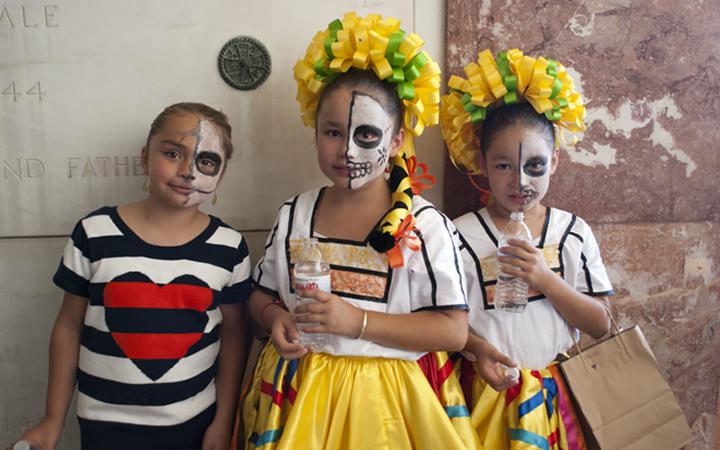For Catholic school teachers, celebrating Dia de los Muertos can be a magnificent way to encourage students to pray for and remember their deceased family and friends. It can also be an opportunity to celebrate, honor, and learn from students and families of Mexican and Central American descent and the richness of their cultural heritage.
Like Halloween, Dia de los Muertos is a holiday linked to the Feasts of All Saints and All Souls in the Catholic liturgical calendar. But, unlike Halloween, which has become mostly about candy and costumes for the sake of entertainment, Dia de los Muertos is a holiday that celebrates the lives of loved ones who have died and the generations of ancestors who have gone before us.
From family picnics at grave sites, to lavishly decorated home altars, to the aroma of marigolds and pan de muerto, the celebration of Dia de los Muertos is as beautiful as it is profound. Here are some ways to help children young and old learn about this important holiday.
-
Start by introducing Dia de los Muertos to your students, either through a Maya & Miguel video for younger students, or an excellent article from the Smithsonian Institute on how Dia de los Muertos is a melding of indigenous and Catholic traditions.
-
For a more in-depth look at the Day of the Dead, check out this list of children's books all about Dia de los Muertos, share some articles from the all-Dia de los Muertos edition of Scholastic News magazine, or, for older students, watch PBS's fantastic 60-minute documentary on the holiday called Food for the Ancestors.
-
How does Dia de los Muertos compare to Halloween? Discuss it with your students using this side-by-side comparison or the Venn diagram included in this lesson pack.
-
Cultures around the globe have always found ways to celebrate their ancestors. This Discovery Channel video shows how Día de los Muertos is celebrated in Patzcuaro, Mexico, and an article from Highlights for Kids (November 2010 issue) called "All Saints' Day All Night" shows how a similar holiday is celebrated in Poland. Both can be used to spotlight how different cultures celebrate and honor the feasts of All Saints and All Souls.
-
Get hands on! Make ofrendas, the traditional altars used to celebrate Dia de los Muertos, using this lesson plan from the University of North Carolina, decorate calaveras, ornate sugar skulls connected with the celebration (or just color them!), or choose one of a number of other activities listed in the Day of the Dead Educational Activity Guide from the Mexci-Arte Museum.
Have some ideas of your own? We'd love to hear other ways your Catholic schools celebrate Dia de los Muertos in the comments below.
Photo by Nathan Solis, courtesy of the Eastsider LA. Originally appeared in Students learn about love, death & Dia de los Muertos at an East L.A. cemetery, October 30, 2014
 Alliance for Catholic Education
Alliance for Catholic Education
